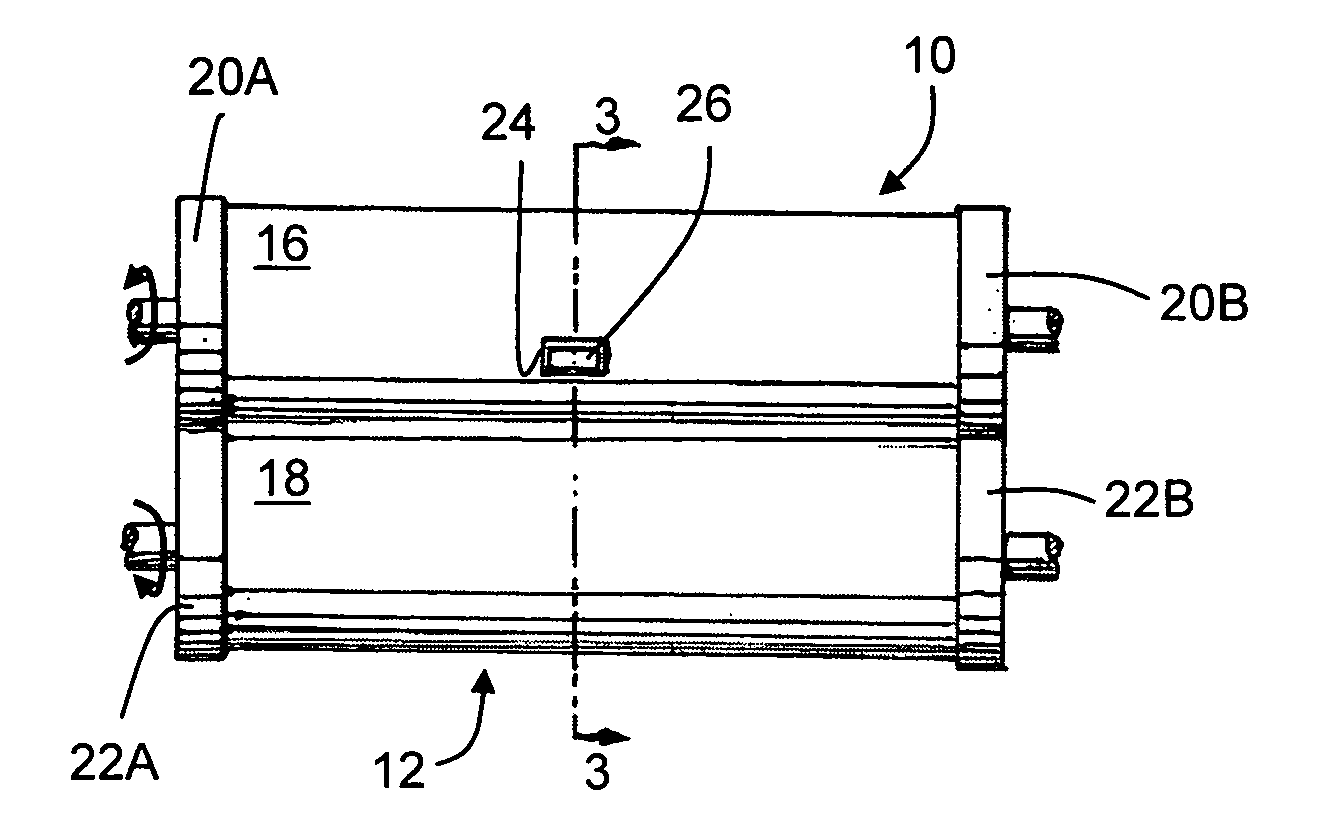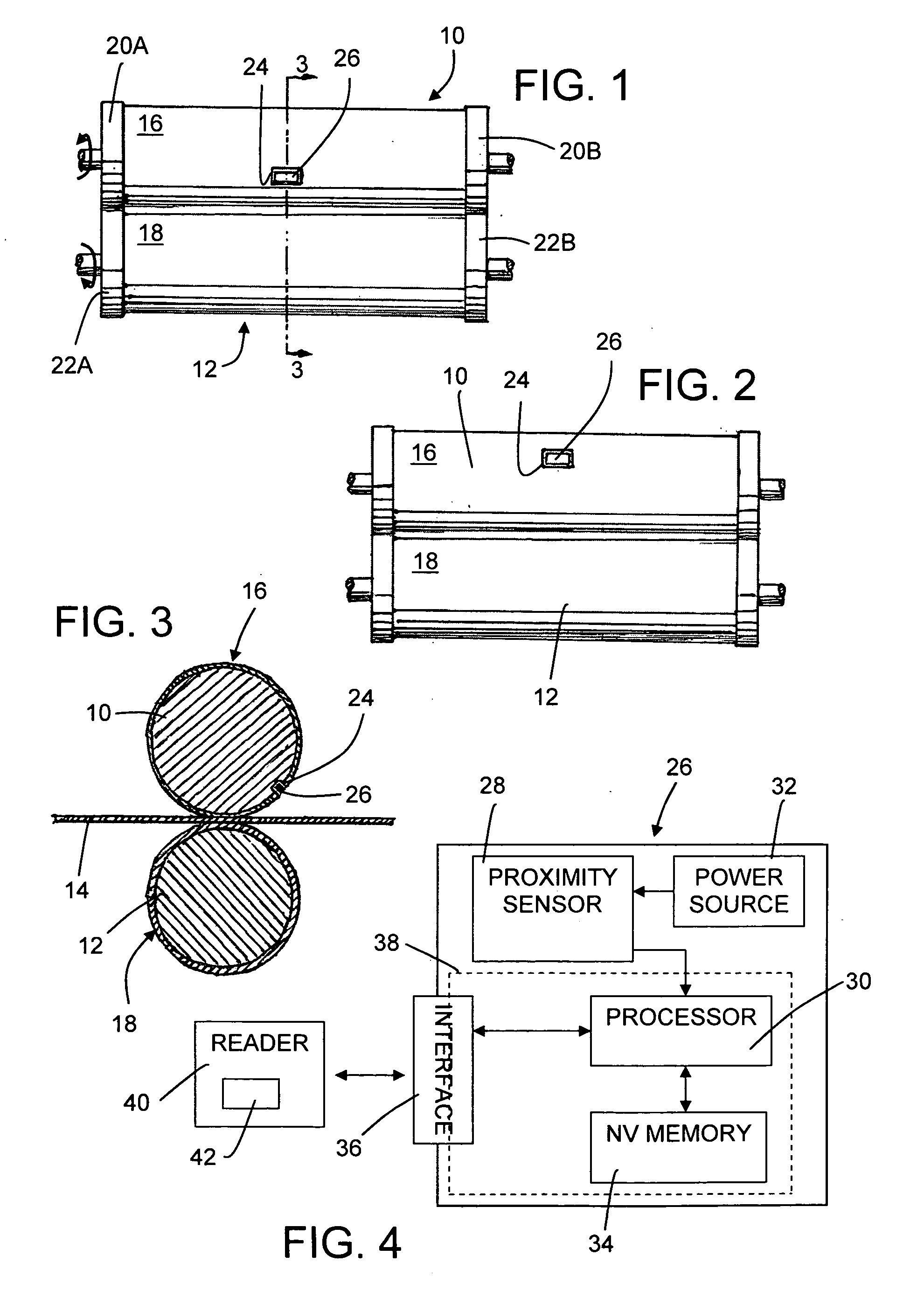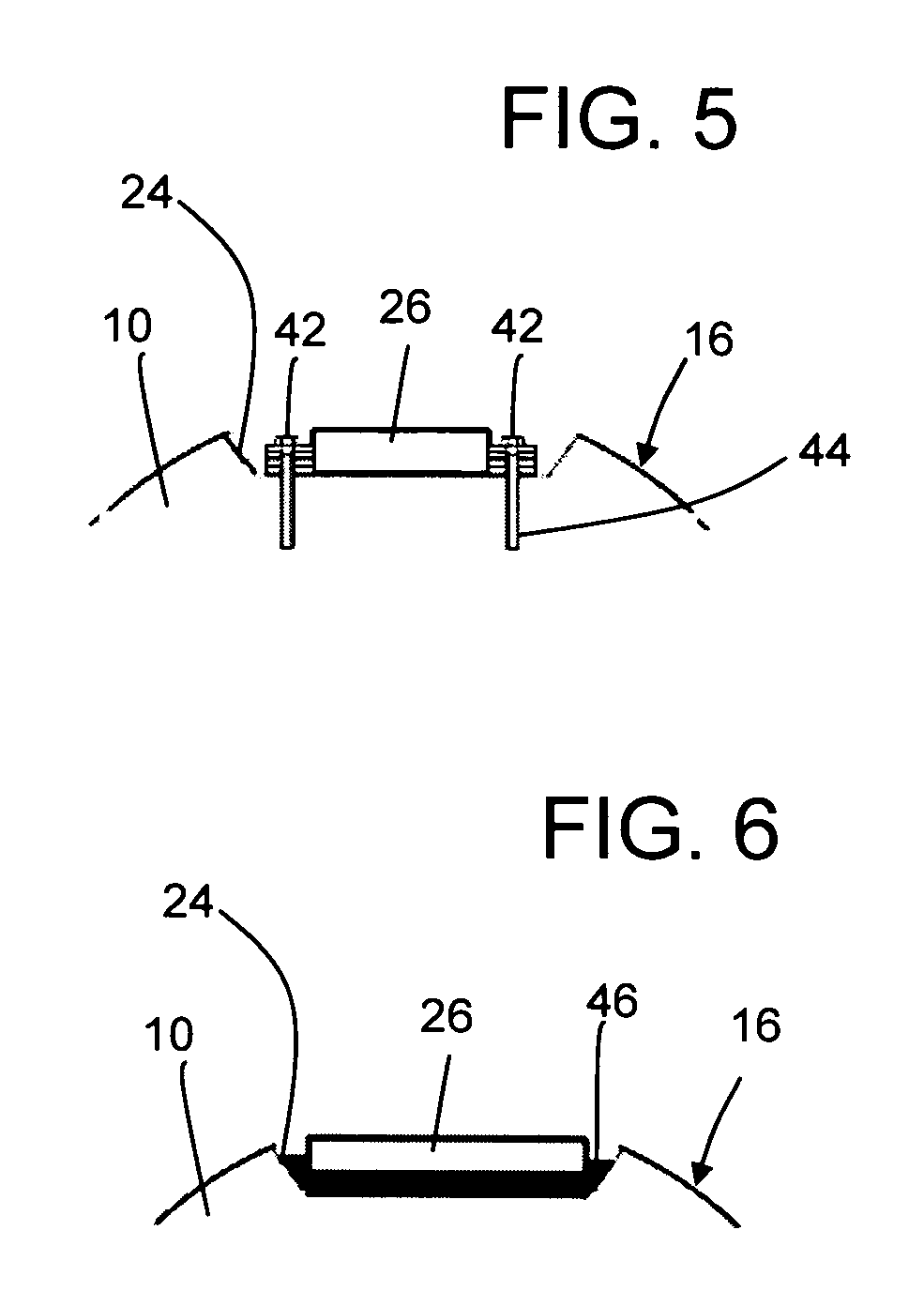Machine-Independent Roller Counting System
a counting system and machine-independent technology, applied in the field of rolling machine and method, can solve the problems of reducing the clearance by a determinable amount, reducing the cost of engraving rotary dies, and comparatively more expensive engraved rotary dies
- Summary
- Abstract
- Description
- Claims
- Application Information
AI Technical Summary
Benefits of technology
Problems solved by technology
Method used
Image
Examples
Embodiment Construction
[0022]The invention disclosed herein is, of course, susceptible of embodiment in many different forms. Shown in the drawings and described here in detail are preferred embodiments of the invention. It is to be understood, however, that the present disclosure is an exemplification of the principles of the invention and does not limit the invention to the illustrated embodiments.
[0023]Turning now to the drawings wherein common reference numbers refer to like and corresponding elements throughout the several diagrams, a rotary cutting apparatus is shown in FIGS. 1 through 3 including a rotary cutting die 10 and an anvil roller 12. Cutting die 10 and anvil roller 12 are each mounted for rotation about their respective longitudinal axes and cooperating with one another for the die cutting of a web 14 passing therebetween. Cutting die 10 has a die cutting surface 16 thereon either spaced from or in interference with anvil surface 18. The clearance between die cutting surface 16 and anvil ...
PUM
| Property | Measurement | Unit |
|---|---|---|
| reset speed | aaaaa | aaaaa |
| non-volatile memory | aaaaa | aaaaa |
| power consumption | aaaaa | aaaaa |
Abstract
Description
Claims
Application Information
 Login to View More
Login to View More - R&D
- Intellectual Property
- Life Sciences
- Materials
- Tech Scout
- Unparalleled Data Quality
- Higher Quality Content
- 60% Fewer Hallucinations
Browse by: Latest US Patents, China's latest patents, Technical Efficacy Thesaurus, Application Domain, Technology Topic, Popular Technical Reports.
© 2025 PatSnap. All rights reserved.Legal|Privacy policy|Modern Slavery Act Transparency Statement|Sitemap|About US| Contact US: help@patsnap.com



